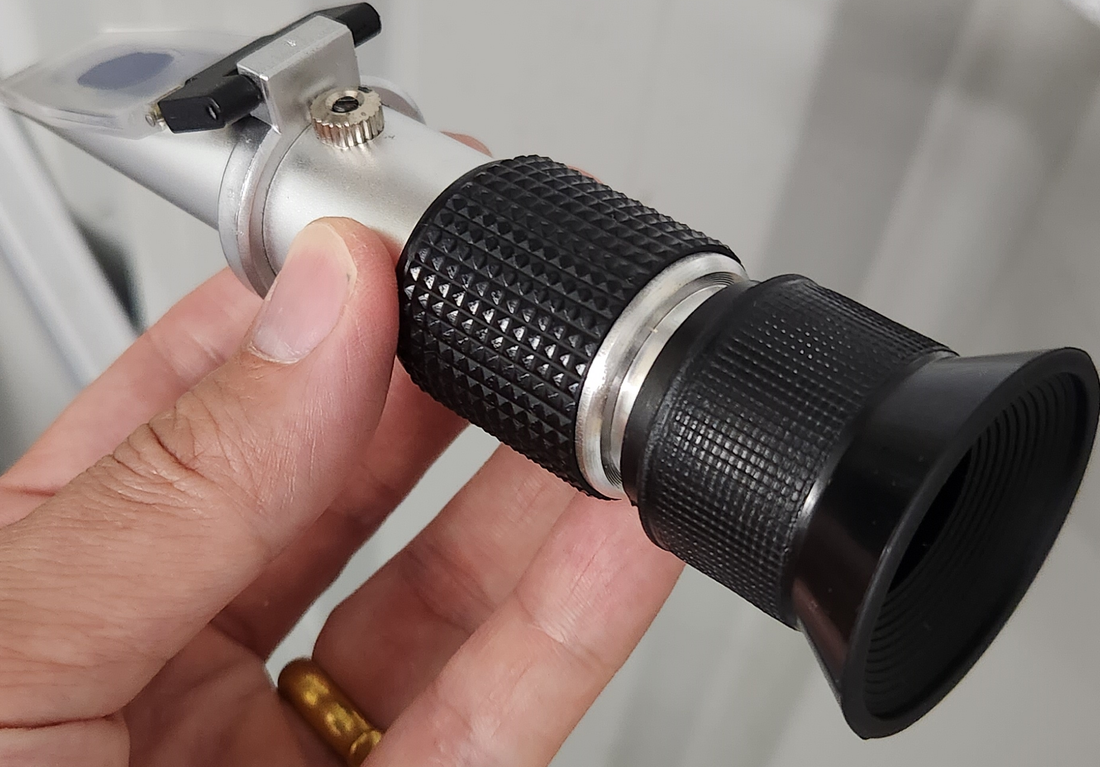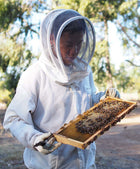The Importance of Harvesting Honey at the Right Moisture Level

In the world of beekeeping, patience and precision are key to producing high-quality honey. One crucial aspect that cannot be overlooked is the moisture level of the honey. Harvesting honey with the correct moisture content ensures its longevity and prevents fermentation. Today, I want to highlight why it's essential to only harvest honey when its moisture level is low enough and how a refractometer can help us achieve this.
Why Moisture Levels Matter
Honey is hygroscopic, meaning it can absorb moisture from the air. If harvested too early, when the moisture level is too high, the honey can ferment and spoil. High moisture content can lead to yeast growth, which not only affects the flavor and quality of the honey but also its shelf life. Properly ripened honey, with low moisture content, has a rich, robust flavor and can be stored for a long time without degrading. Want proof? Google up the news of honey found by archaeologists in Egyptian tombs that is over 3,00 years old - and astoundingly, still perfectly preserved and edible.
The Role of the Refractometer
A refractometer is an indispensable tool for beekeepers. This device measures the moisture content of the honey, giving us a precise reading to determine whether the honey is ready to be harvested. By using a refractometer, we can ensure that we only harvest honey that has reached the ideal moisture level, which is typically below 18%.
Using a Refractometer:
-
Calibrate the Refractometer: Before use, ensure the refractometer is calibrated according to the manufacturer's instructions.
-
Collect a Sample: Take a small sample of honey from the hive and place it on the refractometer’s glass prism.
-
Read the Measurement: Look through the refractometer's eyepiece to read the measurement, ensuring it falls within the ideal moisture range.
My Experience with Moisture Level Management
Throughout my beekeeping journey, I’ve learned that patience pays off. Waiting for the honey to ripen completely ensures that I harvest a product that is not only delicious but also safe and long-lasting. Using a refractometer has made this process much more precise and reliable.
The photos below show a sample reading from my recent harvest. As you can see, the honey's moisture content is well within the optimal range, ensuring that it is perfectly ripe and ready for consumption.
Ensuring the proper moisture level in honey is a crucial step that every beekeeper should prioritize. It's a blend of science and art, requiring careful monitoring and the right tools. By waiting until the honey is fully ripened and using a refractometer to check its moisture content, we can produce the highest quality honey for everyone to enjoy.
-Chris & Family




